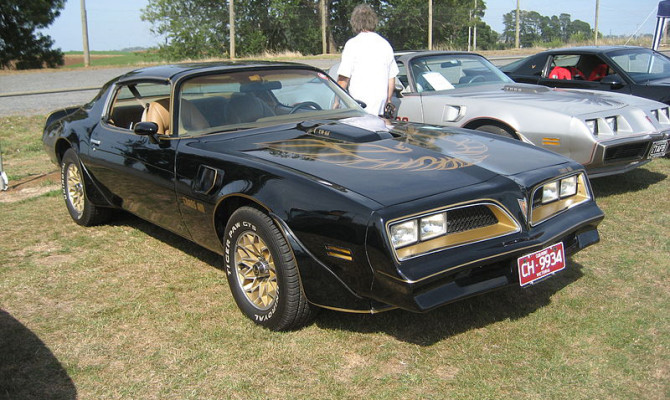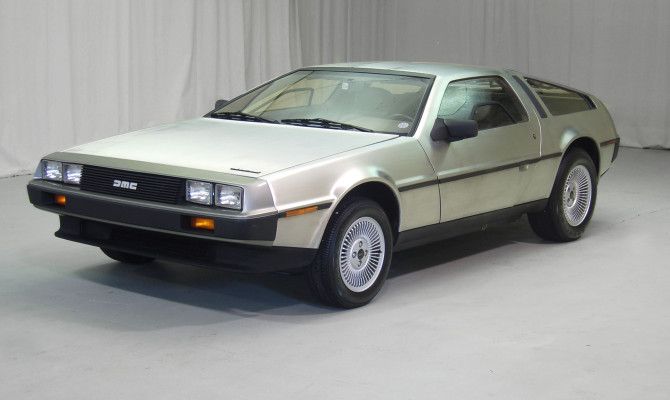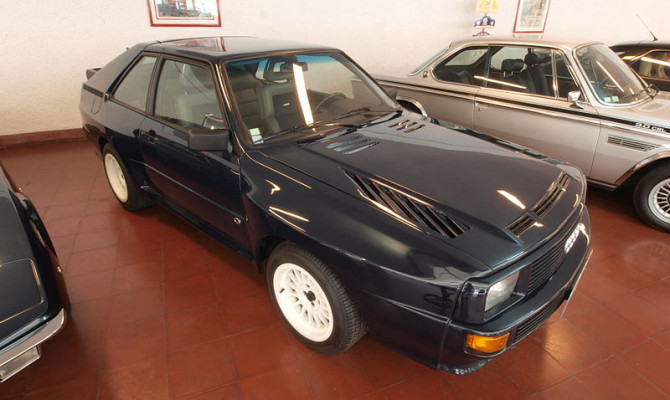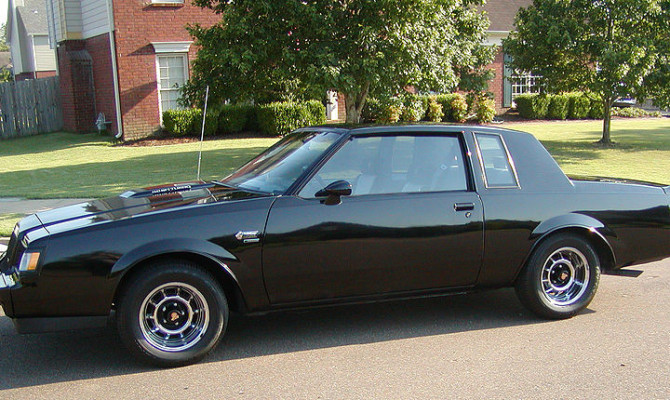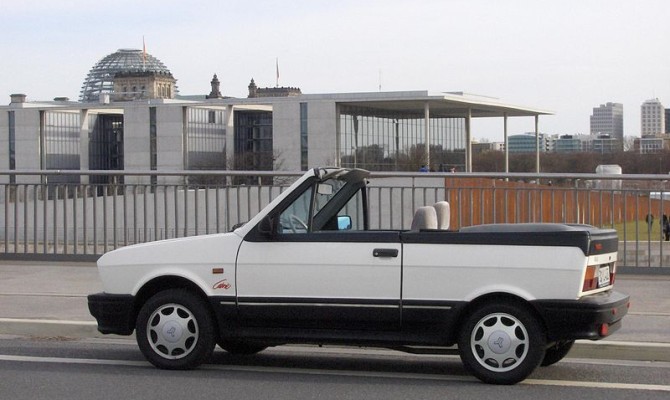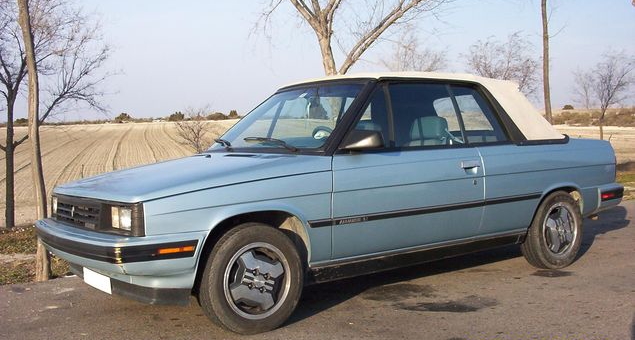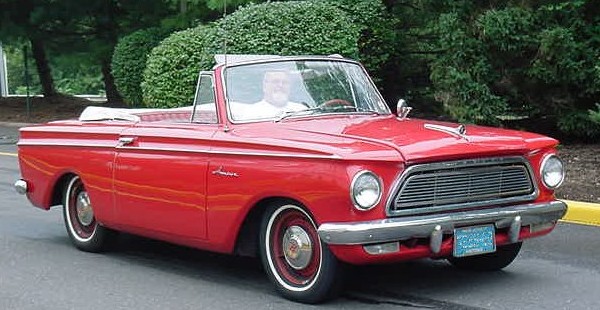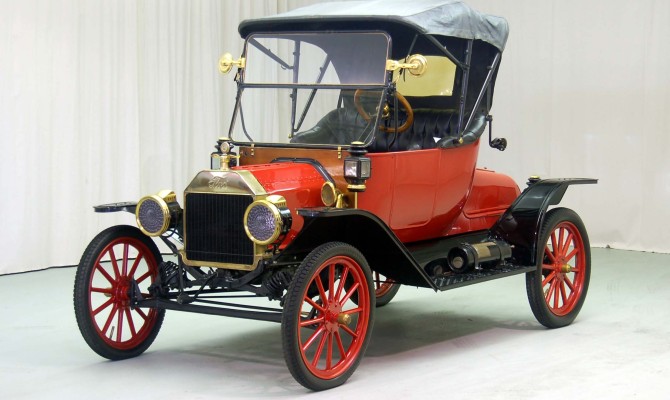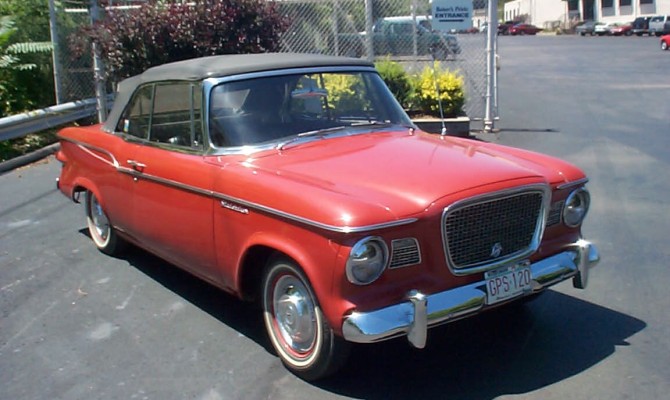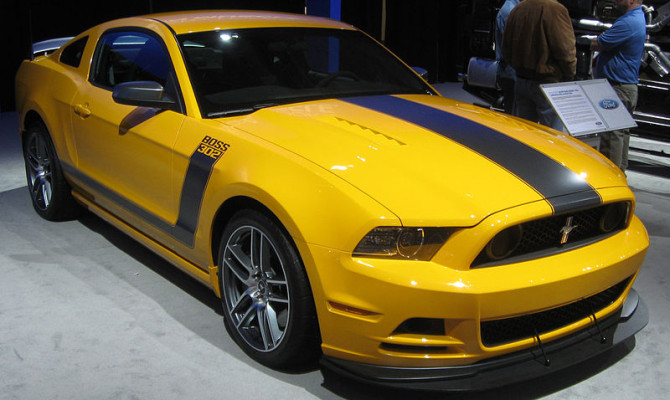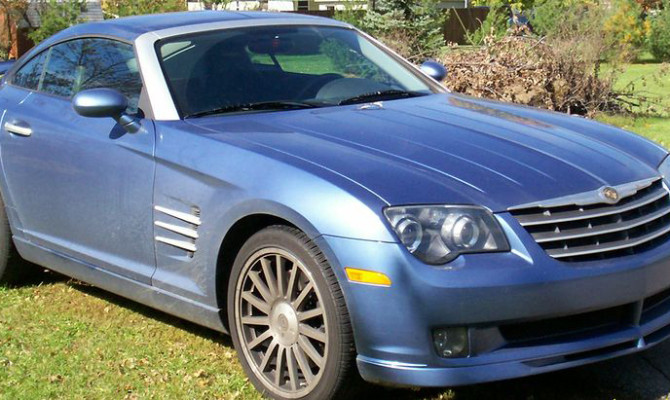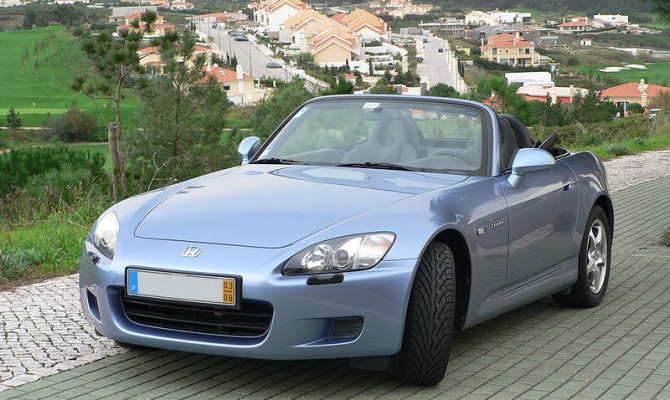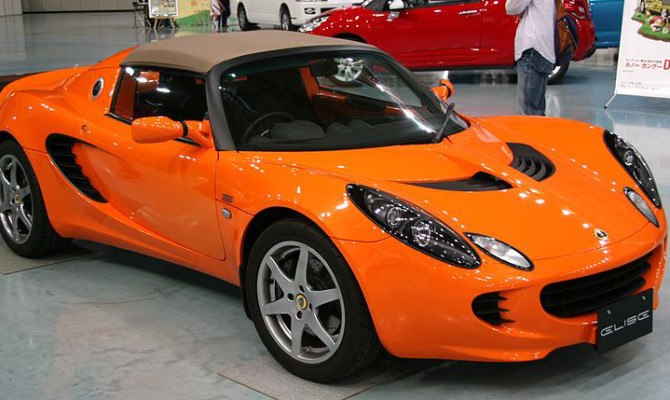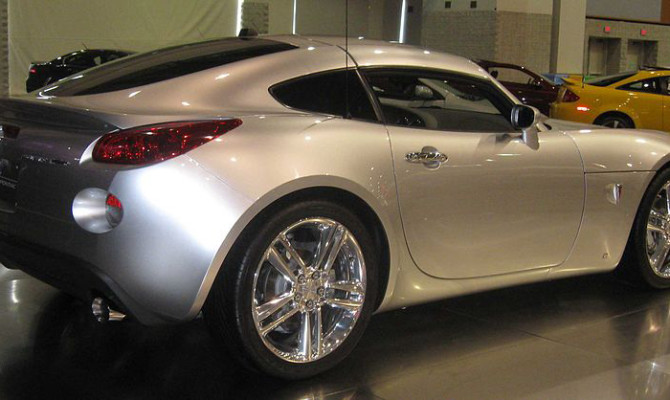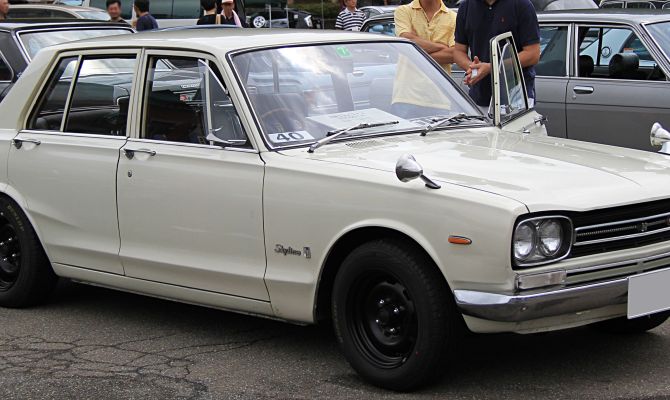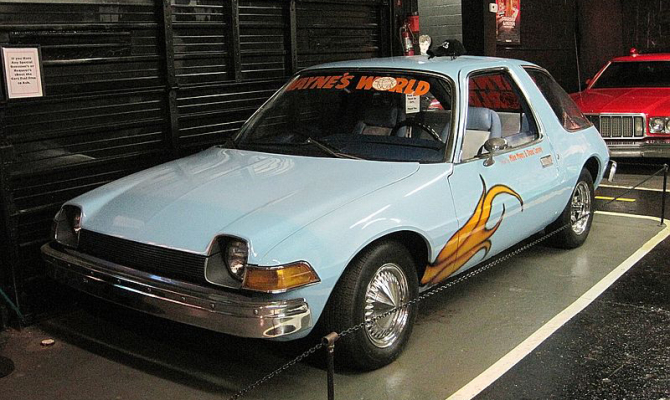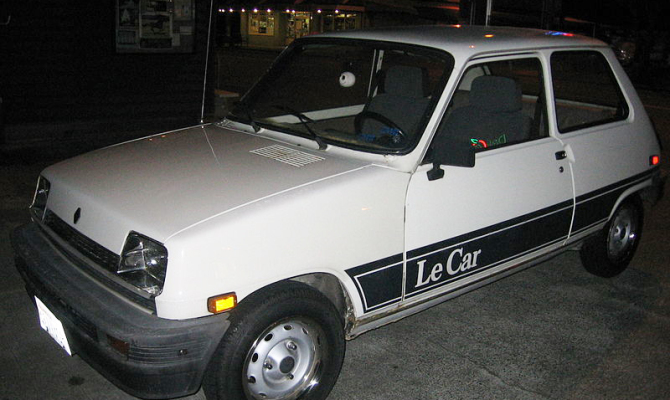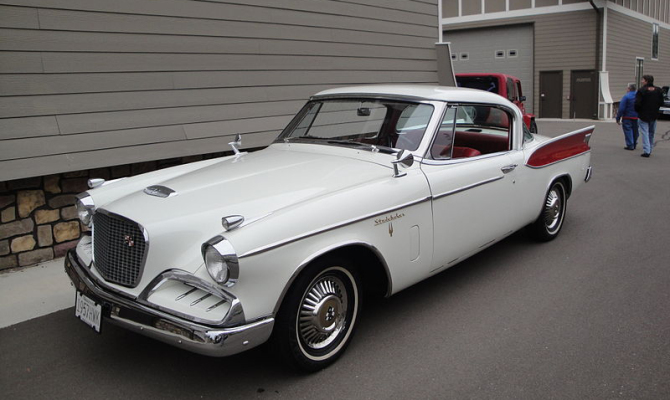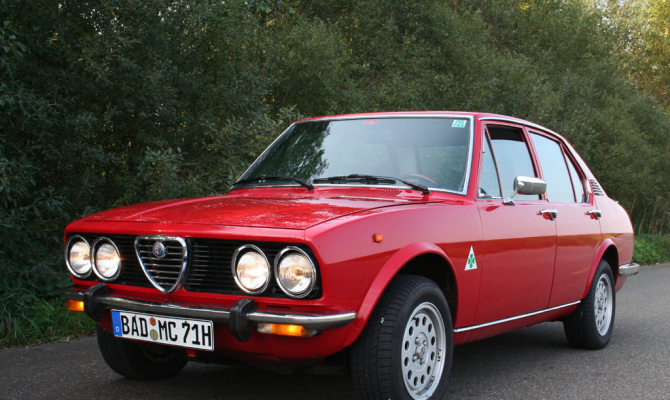by Grant Stoecker
The ‘Malaise Era’ was the antithesis of the muscle car heyday that existed merely a year before its start in 1973.
It was a dark period characterized best by underwhelming engines, EPA restrictions, and questionable styling. In the Malaise Era you could run your new Cobra through the gears without raising the attention of local law enforcement. The Malaise era wasn’t without hope, and the era saw production of a few diamonds in the rough. Here are our picks.
1. 1977 Pontiac Firebird Trans-Am Special Edition
Call it the Burt Reynolds Effect, but the 1977 Trans-Am is still a kick-ass ride. Featured in 1977’s top grossing film, Smokey and the Bandit, the black and gold Trans-Am had as much star power as the moustachioed Reynolds.
The power for the T/A came from a 6.6 litre V8, producing a disappointing 200 horses for 1977, a far cry years prior. It didn’t seem to matter as you cruised down main street, however, T-Tops in the trunk and blasting Journey through the 8-track. The menacing looks of the Trans Am seemed to be more than supple to erase any memory of the days of muscle car past, as other drivers stared in awe from the seats of the latest econo-box.
2. 1981-83 DeLorean DMC-12
The DMC-12 was the car from the future that no one had asked for, but everyone wanted.
Built by an automotive dream team consisting of John DeLorean, Colin Chapman, and Giorgetto Giugiaro, the DMC-12 was built to be a futuristic luxury coupe with a 200 horsepower Wankel rotary engine and price of $12,000. Execution of the concept missed the mark, and the production DMC-12 drew its underwhelming 130 horsepower from a Renault 6, and was sold for $36,000.
Despite this, the DeLorean secured its spot in the hearts of people around the globe as Doc Brown’s time machine in the 80’s mega-franchise, Back to the Future. If only they had come stock with the flux capacitor.
3. 1983-86 Audi Quattro
Germany continued to make fast cars throughout the malaise era, such as the BMW M1 and Porsche 930, but Audi created a completely new segment of car with the introduction of its all-wheel drive performance car, the Audi Quattro.
The Quattro was originally introduced to the European marketplace in 1980, but did not make its way stateside until 1983. With power from its turbocharged five-cylinder going to all four wheels, the Audi Quattro became a rally car legend, and the production models looked the part with its noticeable fender flares, Audi graphics, and BBS alloy wheels. The car was a head of its time, and only 664 were ever sold in the US before Audi discontinued it stateside in 1987.
4. 1974-76 Bricklin SV-1
Canada’s primary contribution to the malaise era was the brainchild of American millionaire Malcolm Bricklin, who dreamt of making the world’s safest sport car, naming his creation the Safety Vehicle One, or SV-1. The SV-1 had a smattering of safety features ranging from an integrated roll cage to safety bumpers, and even lacked an ashtray to discourage drivers from smoking. The Bricklin was powered by an AMC or Ford V8, and was rated favorably at the time against its competitor, the Corvette. Despite initial reviews, the car was notorious for poor build quality, and the engine was prone to overheating due to its small radiator. Bricklin went into receivership in 1976, and the SV-1 was dead in the water.
5. 1987 Buick Grand National/GNX
The Buick Grand National was not your grandfather’s Buick. Often referred to as Darth Vader’s car due to its all black paint scheme, the Buick Grand National was powered by a Turbocharged V6, and was rated for only 245 horsepower. The Grand National Experimental, or GNX, was the baddest of the Grand Nationals, and after rolling off the production line, it was sent to the mad scientists over at McLaren Performance, who modified the engine to be able to run 0 to 100 m/h in a mere 4.3 seconds, a figure impressive by modern standards.
Grant Stoecker writes for Hagerty Insurance. Hagerty is the world’s leading specialist provider of classic car and boat insurance. Learn more at hagerty.ca
by Leon Rochocco, Jr.
“Sex Sells” has long been a popular tenet in advertising.
And sex appeal has typically made it easier to sell cars. The movie industry has always favoured convertibles for their leading men and women, whether Carey Grant, Sophia Loren, Grace Kelly, Kevin Costner or Susan Sarandon.
Virtually any car becomes sexy when you chop the top, but I did say virtually. These five cars resist the glamour and glitz that often come with convertibles.
1985-1987 AMC Alliance Convertible
Built in the United States using a 1.7-litre engine and transmission from Renault, the Alliance was very much French in feeling. It was small, mundane in appearance and less than competitive against the best from Volkswagen, Toyota and Honda. It wasn’t cool with a roof and it didn’t get cooler without one.
A good measure of its appeal then is its collectability and desirability now, which is nil.
1989 Yugo Cabriolet
The formula for the Yugo was simple and it was laughable. Buy a 20-year-old-design of a highly rust-prone Italian economy car, barely update it and ship it to America by the thousands. At first, people will buy a product that is vastly cheaper than the competition, but once the public finds out that it is slow, unattractive, outdated, uncomfortable and minimally reliable, the charm leaves in a hurry.
Did a convertible version help the image and dramatically boost the sales?
Again, the answer was “Not really” – a response that was reinforced by a price that was double the cost of the GV Plus hatchback, which had gained fuel injection and six horsepower.
1960-1963 Studebaker Lark VI Convertible
Solid, sensible and reliable all summed up Studebaker’s Lark. It was a good car without flash or panache, which had limited appeal to car-mad teens.
There’s no question that lowering the top on the Lark made for a pleasant experience, but it didn’t change the status of this car from dud to stud when it came to sex appeal.
1908-1927 Model T Ford
Ford’s Tin Lizzie has always been rugged, reliable and in a class of its own. But sexy? Not likely.
The roadster or touring car versions may be fun, simply because fun goes with open-air motoring like peanut butter goes with jelly. Sex appeal, though, simply isn’t part of the equation with this American icon, though the story would be very different if we were talking about a 1940 Ford Convertible Coupe.
1961-1963 Rambler American
The Rambler had to be one of the most sensible cars built in North America: properly engineered to conservative standards, with incredibly reliable straight-six engines and pricing within reach of middle class budgets. For 1961, the line offered a convertible and it was a lot like its sibling – responsible, sturdy and dull.
In appearance and performance, the new drop-top was essentially an open-air version of an orthopedic shoe. You know, the kind of show that Marilyn Monroe or Angelina Jolie would avoid like the plague. Even spraying pheromones on this car wouldn’t give it an ounce of sex appeal.
Leon Rochocco, Jr. writes for Hagerty Insurance. Hagerty is the world’s leading specialist provider of classic car and boat insurance. Learn more at hagerty.ca.
“Chevrolet certainly had an interesting way of celebrating the Camaro’s birthday – they killed it at age thirty-five.”
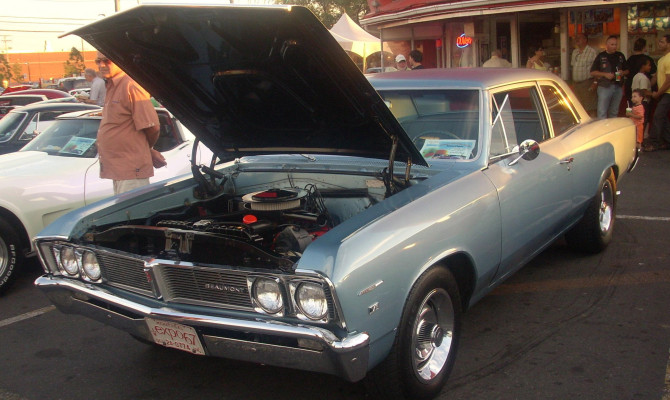
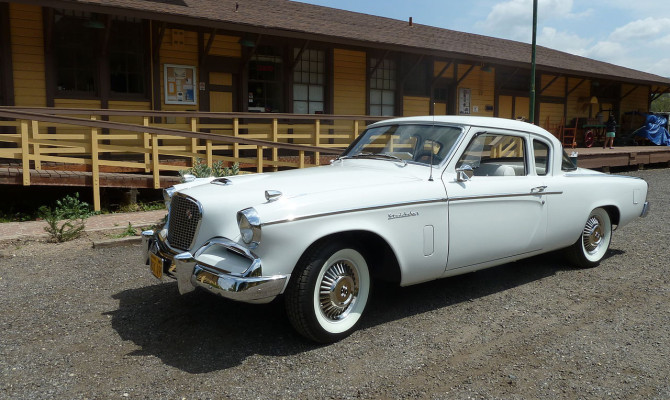
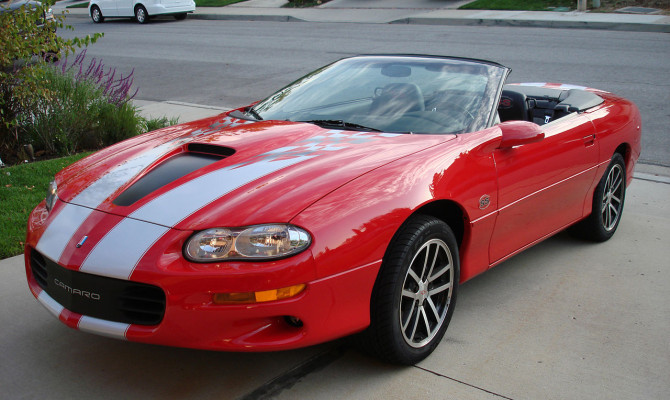
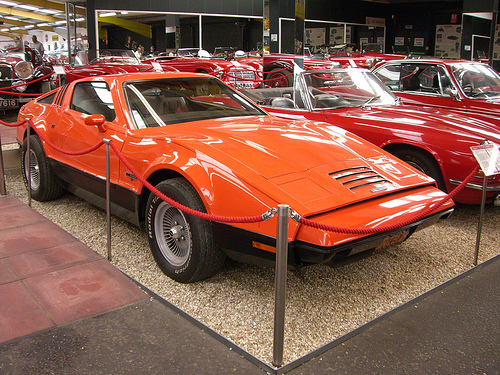
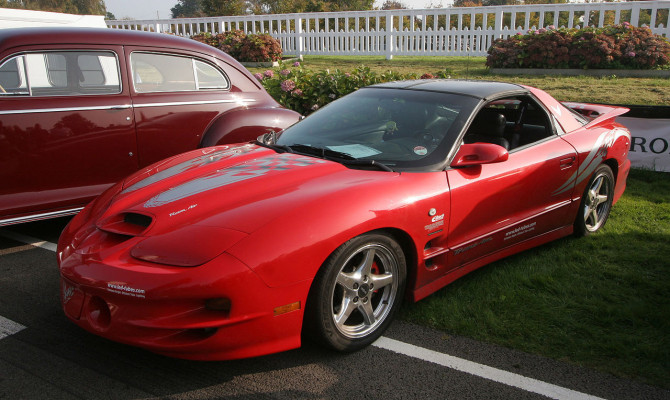
Canada has an automotive heritage every bit as rich as that of the United States. Some extraordinarily interesting collectible cars have been produced here over the years.
These are five favourites:
- 1965 Acadian Beaumont Sport Deluxe – Similar to the American Chevrolet Chevelle, the Beaumont Sport Deluxe followed the original muscle car formula of the Pontiac GTO by stuffing the most powerful engine readily available into the smallest body. Only twenty-three were built with the potent L79 327 cubic inch, 350 hp engine option. All were built in GM’s Oshawa, ON plant.
- 1974-75 Bricklin SV-1 – The Bricklin was a gullwing door sports car that was built in what was then a relatively under-employed part of New Brunswick. Generous tax-incentives were paid out of the provincial coffers to get Malcolm Bricklin to locate his factory there. If it all sounds familiar, it should, this was essentially the DeLorean story played out seven years earlier in Canada rather than Northern Ireland. Sadly, it ended much the same way with not even two years of production of the Bricklin “safety sports car” before the whole operation folded up owing the government of New Brunswick over $20 million. Power came from either Ford or AMC V8s.
- 1956 Studebaker Flight Hawk – The Hawk was a particularly fine-looking coupe that was a derivative of the 1953 Robert Bourke/Raymond Loewy Starliner coupe. Oddly, only the 1956 model year base six-cylinder Flight Hawk coupes were built in Canada in Studebaker’s Hamilton, ON plant where the last Studebakers rolled off the line just ten years later in 1966.
- 2002 Pontiac Firebird Trans Am WS6 – Most Americans are blissfully unaware that William Shatner and Michael J. Fox are actually Canadian. They’d likely be equally surprised to find out that one of the most quintessentially American muscle cars was actually Canadian. The last (and some argue the best) Pontiac Trans Am with the WS6 package was assembled alongside its F-body cousin the Chevrolet Camaro in Sainte-Thérèse, Quebec where production had shifted in 1993.
- 2002 Chevrolet Camaro SS 35th Anniversary – Chevrolet certainly had an interesting way of celebrating the Camaro’s birthday – they killed it at age thirty-five. The SS shared the Corvette-derived LS6 powerplant with the above-mentioned Trans Am WS6. In its convertible form, it is quite collectible. After F-body production ended in 2002, GM closed the plant, which was the last GM plant operating outside of Ontario.
Rob Sass is the vice-president of content for Hagerty Insurance. Hagerty is the world’s leading specialist provider of classic car and boat insurance. Learn more at hagerty.ca.
“The theory behind the ‘his-and-hers’ shifter was women wouldn’t want to be bothered by changing gears while driving!”
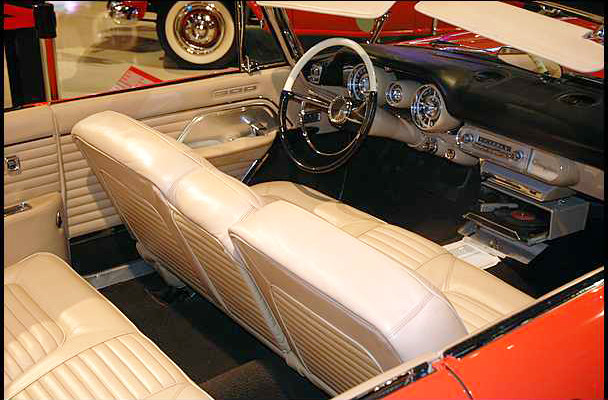
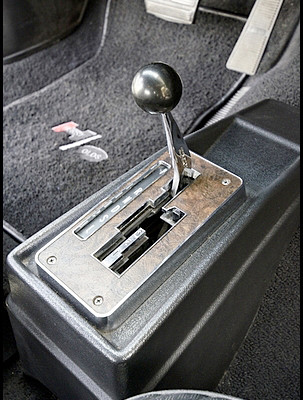
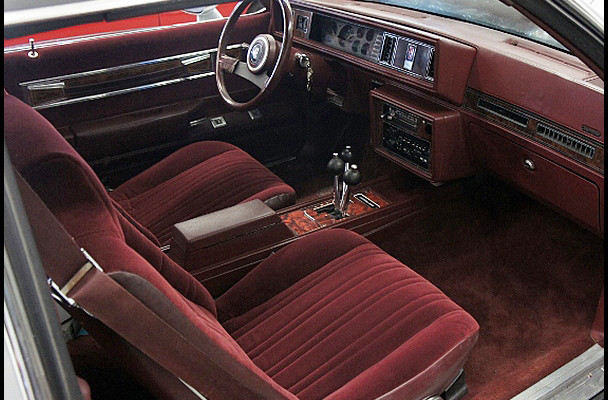
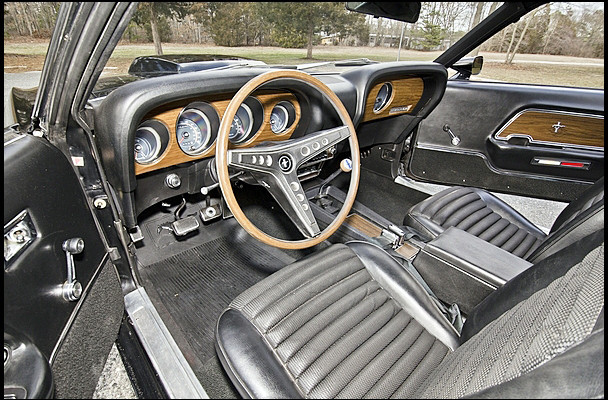
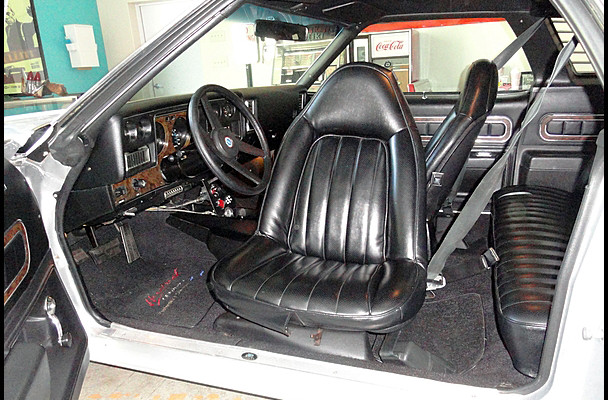
by Matt Lewis
Anyone who has purchased a car has faced an overwhelming list of features on the window sticker.
Over the years, there have been some imaginative features offered right from the dealership. Here are five of the more ‘interesting” examples.
Lightning Rods Shifter – 1984 Oldsmobile Hurst
The perfect option for any automotive enthusiast who just can’t get enough levers, the Lightning Rods shifter walks a very strange line between a typical automatic and a full ratchet shifter. As goofy as it may look, Lightning Rods have no problem putting the power to the ground.
Swivel Seats – 1975 Chevrolet Laguna S3
It’s a wonder that more cars weren’t offered with swivelling seats, seeing as those troublesome stationary seats are always such a bother to get in and out of. While the swivel seat was designed for easy egress, an added benefit is that your vinyl won’t wear out nearly as quickly.
Highway Hi-Fi record player – 1957 Chrysler 300
The Highway Hi-Fi did its best to stop the needle scratching your precious 45s. Not only is there a generous amount of suspension built into the record player, but the pressure placed on the needle was known to prematurely wear records out.
Rim Blow Steering Wheel – 1969 Ford Mustang Boss 429
In a time before road rage, Ford, AMC, Chrysler, and GM all thought it would be much better to get rid of the pesky horn button and just have drivers squeeze the wheel. One major defect of the Rim Blow was shrinkage, which caused the horn to sound all the time!
‘His-and-Hers’ Shifter (Hurst Dual/Gate) – 1969 Oldsmobile Hurst 442
One of the more sexist options to be offered on a car (to date), the Hurst Dual/Gate shifter was branded as the “His and Hers” shifter. The theory behind the ‘his-and-hers’ shifter was women wouldn’t want to be bothered by changing gears while driving! This option allowed the driver to kick the stick over and access all three gears “manually.”
*Matt Lewis writes for Hagerty Insurance. Hagerty is the world’s leading specialist provider of classic car and boat insurance. Learn more at hagerty.ca and you can email rsass [at] hagerty [dot] com
by Grant Stoecker
Most 5- to 10-year-old cars are just used cars, destined to head steadily to the bottom of their depreciation curve as an intermediate stop on the way to their ultimate destination— the local pick-and-pull lot.
Here are five used cars that deserve a cushy spot in the Garage Mahal of a collector:
2009 Pontiac Solstice GXP coupe
Pontiac’s demise during GM’s bankruptcy was a sad story, and the loss of this fantastic sports car made it even more bitter. The Solstice roadster was an attractive car that suffered from terminal packaging problems. The Solstice coupe was drop-dead gorgeous and far more practical. Just 1,200 were built before GM did the equivalent of burning, pillaging and sowing salt in the field—they killed Pontiac, offed the Solstice and closed the Delaware plant in which it was built. Used coupes with normal miles have barely depreciated and low mileage cars are already appreciating.
2006 Chrysler Crossfire SRT6
The 2006 Crossfire SRT6 is undoubtedly the greatest lovechild of the affair between Chrysler and Mercedes-Benz in the early 2000s. While the standard Crossfire coupe and convertible where offered from 2004-2008, the SRT6 was only available in showrooms in 2005, and as a factory special order in 2006. This Chrysler/Benz mashup was essentially a Mercedes-Benz SLK32 AMG redressed as a hardtop coupe with breakneck performance, featuring a handcrafted AMG supercharged V-6 laying down 330 hp to the rear wheels. Hindsight is always 20/20, and the only regrettable decision in development of the car was to offer only the AMG signature automatic transmission, making it the only model in the Crossfire lineup not offered with a 5-speed manual. Fewer than 1,500 were produced, making this model quite rare.
2005-2011 Lotus Elise
While the Lotus Elise’s last model year technically was 2011, they still are being produced as a stopgap model until the 3rd generation model is released. Unfortunately, the Elise lost its smart airbag exemption stateside, meaning that the only Lotus available in North America is the all-too-luxurious Evora — it even has air-conditioning and power steering as standard equipment. On a Lotus! For those who still want to enjoy the ever-so-Spartan Elise, consider looking to the used car market. However, buyers might want to be wary of HPDE and track cars, as these have probably seen quite a bit of abuse — Elises with salvage titles are prevalent.
1999-2009 Honda S2000
Possibly the best enthusiast car produced under the Honda badge in the past decade, the S2000 served as a fitting tribute to the S-series roadsters of the 1960s. With its aggressive styling, a high-revving 4-cylinder engine producing 237 hp, an ultra-low center of gravity, and 50/50 weight distribution, an unmolested S2000 is bound to be a future collector car. However, due to the affordability of the S2000, many have suffered a cruel and all-too-usual punishment at the hands of the “Fast and Furious” generation. Serious collectors should look for the rarer Club Racer model, which saw limited production in 2007 only.
2012/2013 Ford Mustang Boss 302
This special edition of Ford’s ever-popular Mustang saw the return of the late ’60s and early ’70s Trans Am legend, the Boss 302. The Boss got its original name in the late ’60s when it was a skunk works project at Ford. Whenever asked what they were working on, members of the team simply responded “the boss’s car,” and the nomenclature stuck. The new generation features a retuned 5.0, putting out an additional 32 hp, and enough track day goodies to make any racing enthusiast giddy at even the slightest thought of it. In addition to the standard Boss, an additional Laguna Seca variant is available. The LS is a further upgrade with racecar parts, including a rear cross brace, and is limited to only 750 units per year. The Boss 302 was only produced for its scheduled two-year run, with just 4,000 models made each year, ensuring future collectability.
*Grant Stoecker writes for Hagerty Insurance. Hagerty is the world’s leading specialist provider of classic car and boat insurance. Learn more at hagerty.ca…
“Post-war cars that swam against the stream of fins, scoops, chrome and decals and were memorable for their elegant simplicity…”
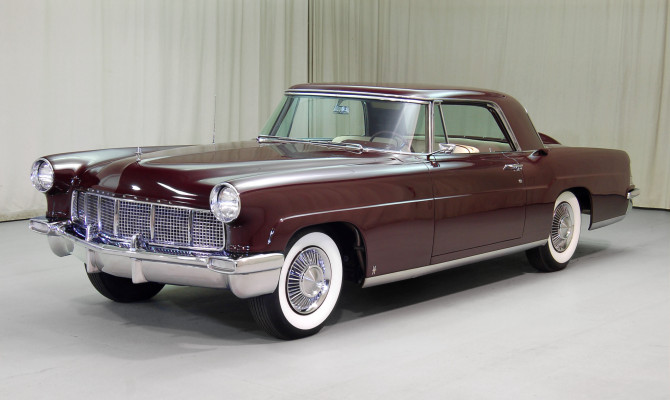
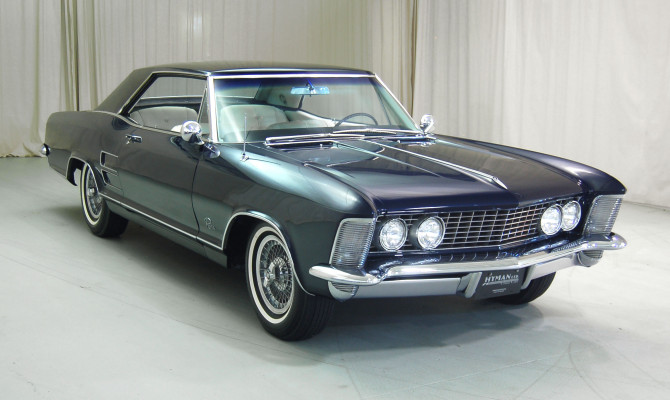
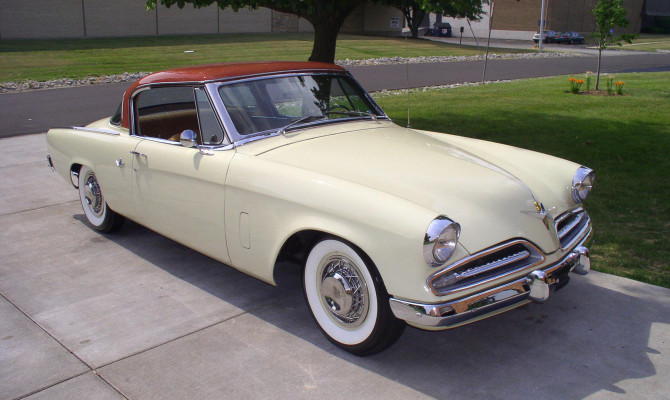
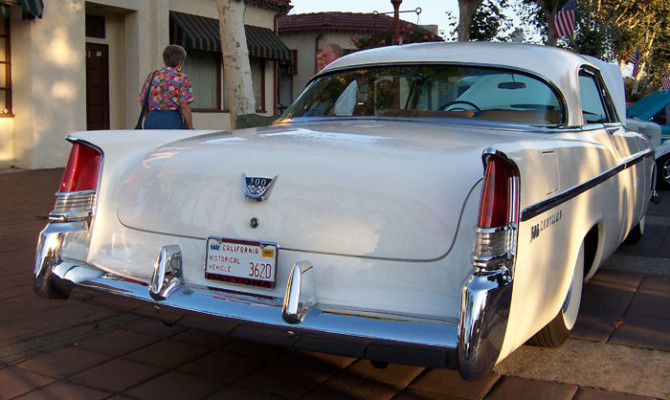
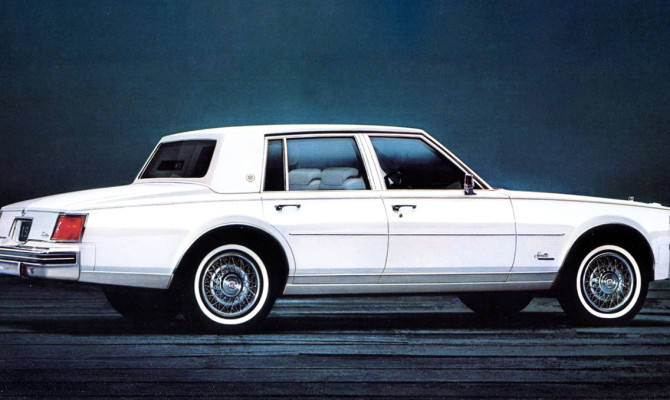
Poet Henry Wadsworth Longfellow famously wrote, “In character, in manner, in style, in all the things, the supreme excellence is simplicity.”
And one could argue that the same is true in automotive design. American car design of the 1950s-1970s was beloved for its flamboyance; here are the best from that bunch of years…
1963-65 Buick Riviera
The 1963 Riviera was the result of GM design head Bill Mitchell’s desire to produce something that was a combination of a Rolls-Royce and a Ferrari. Whether he succeeded in that odd mash-up is debatable, but the 1963-65 Riv was a thing of great elegance and simplicity, particularly the 1965 model with hidden headlamps.
Introduced at the height of Camelot, it was as elegant as Jackie Kennedy.
1956-57 Continental Mk II
The Continental was emphatically not a Lincoln, even though it shared the name of numerous products of that division of the Ford Motor Company. For two brief years, Continental was a division unto itself and the Mk II may well have been the most elegant post-war car built in America. Costing the then-unheard-of sum of $10,000 (the equivalent of almost $87,000 in today’s money), the care and craftsmanship that went into each car ensured that Ford still lost money on each one.
Elvis, Frank Sinatra and Elizabeth Taylor were all Continental owners.
1953 Studebaker Regal Starlight coupe
Famous industrial designer Raymond Loewy put together a team of talented designers that included Robert Bourke to design a car like no other of the 1950s. Low, sleek and incredibly elegant, the Regal Starlight is largely forgotten today by all but the most diehard car collectors and fans of the long-defunct Studebaker Corporation of South Bend, Indiana.
1975-79 Cadillac Seville
In a decade not necessarily known for elegance (heaven knows how many high school kids rode to prom in dad’s Seville wearing powder blue polyester tuxedos), the Seville stood out against the odds as a particularly elegant design. Not only was it handicapped by being a product of the 1970s, but it was the first time that a substantial number of Chevrolet components were used in a Cadillac (it shared the same underpinnings as the Nova). But this was no Cimarron. The first-generation Seville was elegant, restrained and every bit a Cadillac. Although it was the smallest car in the lineup, it was the most expensive and it looked the part.
1956 Chrysler 300B
The first of the 300 “letter-series” (the 1955 C-300 was never actually called the “300A”), it was probably the prettiest Mopar design of the 1950s. Its pillarless hardtop design and restrained use of chrome were wildly inconsistent with the over-the-top performance that the car was capable of delivering from its 355-hp, 354-cubic-inch Hemi V-8. It terrorized NASCAR back in the day.
Rob Sass is the vice-president of content for Hagerty Insurance. Hagerty is the world’s leading specialist provider of classic car and boat insurance. Learn more at hagerty.ca
By Grant Stoecker
“American automotive manufacturers have made a number of performance cars exclusively for Europe and Australia, but have you ever heard of an African performance car?”
The U.S. and Canada might get a wide variety of unique and exotic cars, but there are a few cars that never made it to our showrooms and appear now only has special imports.
1972 Lancia Stratos HF
The Lancia Stratos HF is a monster of car. In the concept stages, the Stratos was an attempt by Bertone to get its foot in with Lancia, who had previously worked with Pinin Farina for design. The legend states that Bertone re-bodied a Lancia Fulvia and drove it to Lancia’s headquarters. Impressed with the Stratos prototype, Lancia agreed to collaborate with Bertone to create their next generation rally car. The Stratos was built around a Lancia chassis, with a Ferrari Dino engine positioned behind the seats. The rolling chassis was finished off with an aerodynamic body fitted by Bertone. The Lancia would go on to have a legendary career, winning the World Rally Championship from 1974-1976.
1973 Chevrolet Firenza Can Am
American automotive manufacturers have made a number of performance cars exclusively for Europe and Australia, but have you ever heard of an African performance car? Meet the Chevrolet Firenza Can Am, a Euro-American mash-up that was never sold in either of those markets. Built to compete with Ford’s inferior Capri Perana, the Can Am began its existence in Britain as a Vauxhall Firenza frame, which was then shipped straight south to Port Elizabeth, where it was paired with a power train straight out of an American legend — the 1969 Camaro Z/28. With a lightweight body and nearly 300 horsepower, the smell of burning rubber was a no-cost option, and I’m sure there was plenty of that. The car was limited to a run of 100, which were built to satisfy homologation requirements for Argus Production Car series, 30 of which are still known to exist.
1969 Ford Escort RS1600
While the latter part of the 1960s might have been the middle of the Mustang’s heyday, Ford was busy building fast cars all around the world. One of those cars was Ford’s venerable Escort, which was one of the top selling cars in Europe at the time. Of course, Ford engineers weren’t satisfied with a compact coupe with 1.3-litre engine, so they contacted the blokes over at Cosworth and developed the Escort RS1600. While the Cosworth engine may have put out only 113 horsepower, the tiny Escort was barely tipping the scales at 1,800 pounds, making the RS1600 one of the coolest cars cruising the UK at the time.
1969 Nissan Skyline GT-R
The Nissan Skyline GT-R is arguably the most iconic sports car to ever come from the islands of Japan. While the GT-R is most commonly idolized in its mid-’90s guise from the Fast & Furious franchise, our pick is the original — the 1969 Skyline GT-R. Introduced at the 1969 Tokyo Auto Show, the GT-R was a Nissan Skyline sedan that was stripped out and given the special treatment by the boys in the Nissan Skunks Works team. The heart of the GT-R is a Nissan racing V-6 engine putting out 160 horsepower, allowing the GT-R to outrun its European rivals. Other cool upgrades included wide wheel arches, rally wheels, front and rear spoilers, and of course, the now-iconic GT-R badges.
The Porsche 959 is a perfect example of what happens when some German mad scientists in Porsche decide that the 911 Turbo isn’t just quite enough. Built to be the ultimate Group B rally car, Porsche decided to slap an all-wheel drive system and a twin-turbo 2.8-liter boxer engine in a highly modified 911. In order to fulfill the FIA’s homologation rule, Porsche built 337 examples for consumption by the public. Of course, the EPA and Porsche weren’t quite on the same page, and the 959 was never legally sold in the U.S. However, several example of the 959 have made their ways to our shores, most notably the “Gates 959,” which was stored by U.S. Customs for 13 years and was key in the passing of the “Show and Display” law.
Grant Stoecker writes for Hagerty Insurance. Hagerty is the world’s leading specialist provider of classic car and boat insurance. Learn more at hagerty.ca
by Grant Stoecker
Driveway Canada
**********
Sequels are rarely as good as the first, but give this second round of clunkers from film and television a chance.
Each of the following cars was selected based on reader comments.
Uncle Buck, 1975 Mercury Marquis Brougham
We all have that oddball relative – if you can’t think of one, well, it’s probably you. In 1989’s hit comedy, Uncle Buck, John Candy portrays Uncle Buck, an unemployed gambler charged with caring for his wealthy suburbanite brother’s children. While the children might find Uncle Buck a bit odd, they find his ’75 Marquis downright revolting — and terrifying if standing anywhere near it when it backfires.
Columbo, 1959 Peugeot 403 Cabriolet
This popular television series starred Peter Falk as disheveled detective Lieutenant Columbo. While most cops would opt to drive a service car, Columbo chooses to drive his personal car, a faded Peugeot 403 Cabriolet that often suffers from mechanical problems at inopportune moments. And just one more thing: The car was personally selected for the show by Falk, after he spotted it in a parking lot at Universal Studios.
Wayne’s World, 1976 AMC Pacer
Ah, the “Mirth Mobile”! This 1976 Pacer was the ride of choice for public-access cable stars Wayne and Garth in 1992’s cult classic Wayne’s World. While the Mirth Mobile, with its mismatched wheels and flame decals, is sure to make any car lover go “schwing,” the Pacer is often noted for its unique styling, courtesy of the famous designer Richard Teague.
Harper, 1956 Porsche 356 Speedster
Who would have ever thought of Paul Newman driving a Porsche on the big screen? Sarcasm aside, Paul Newman’s eponymous character, Harper, is a wisecracking private investigator tasked with tracking down a kidnapped millionaire in the 1966 film of the same name. Harper’s decrepit Porsche 356 Speedster makes several appearances in the film, including a horrific tumble down a hill (at least for a Porsche-phile like myself). Fortunately it was not a true 356A Speedster, but a shell with exhaust tips attached.
Dude Where’s My Car, 1979 Renault Le Car
In 2000’s so-bad-it’s-funny comedy Dude, Where’s My Car, Ashton Kutcher and Seann William Scott wake up from an eventful night only to find they’ve forgotten where they parked their beat-up Renault Le Car. In an effort to find it, they encounter an unlikely group of UFO cultists, two races of aliens, and a universe-destroying Rubik’s Cube. After saving the universe from guaranteed destruction via the Rubik’s Cube, they discover that their car has been hidden behind a double-parked mail truck the entire time.
Content provided by Hagerty Insurance. Hagerty is the world’s leading specialist provider of classic car and boat insurance. Learn more at hagerty.ca.
The classic car world is possibly one of the most opinionated collecting pursuits known to man, and nearly everyone seems to have an opinion on relative values and desirability.
Each car on the list has at one time or another been deemed by “experts” to be hopeless as a collectible and each has one thing in common – they’ve skyrocketed in value.
1956-58 Studebaker Golden Hawk
Poor Studebaker, the cars of the ill-fated favorite son of South Bend, Ind., never seemed to get the same love from collectors as the cars of the Big Three. But they may be getting the last laugh. (more…)
It’s a lucky thing that ‘Cash for Clunkers’ was enacted after any of these movies were made.
These films would each have been a bit less amusing without their “star” cars.
- Ferris Bueller’s Day Off – 1979 Alfa Romeo Alfetta 2000 Sport Sedan: Ferris Bueller’s long-suffering best friend Cameron Frye “drove” this faded and rusty Alfa Romeo sedan, sort of anyway. He never really got it started. Best diagnosis from our Alfa Romeo fans is the failure of something called a thermostatic actuator. We’re not making that up. I swear.
- The Big Lebowski – 1973 Ford Gran Torino: Jeff Bridges’ character Jeffrey “The Dude” Lebowski is a man that the narrator opined “might be the laziest man in Los Angeles County, which would place him high in the running for laziest man worldwide.” He’s also a man who wrote a check in the amount of 69 cents for a carton of half and half and he drives a 1973 Ford Torino that was evidently some sort of shade of white, yellow, beige or gold prior to acquiring its as-filmed “patina” of rust, dents and primer spots.
- Body Heat – 1964 Corvette: William Hurt plays an easily duped ambulance chaser of a Florida lawyer in this neo-noir classic. In addition to the fact that Kathleen Turner delivered a star-making performance in the film, we love it for the faded and disheveled but totally original Riverside Red ’64 Corvette convertible that Hurt’s character drives.
- Ace Ventura: Pet Detective – 1972 Chevrolet Monte Carlo: Jim Carey’s character “Ace Ventura” obviously cares more about the animals he is searching for than the car he is driving. Things go south almost immediately for Ace as his Monte Carlo is pummeled shortly after the opening credits by an angry man with a baseball bat. He is forced to spend the rest of the movie driving around with his head hanging out of the window, much like his canine companions.
- Joe Dirt – 1969 Dodge Charger Daytona: David Spade’s eponymous character drives a beat-to-hell ’69 Dodge Daytona, which probably gave at least a few MOPAR enthusiasts a stroke mid-movie. Like Mr. Dirt’s mullet, the Daytona is all business up front, party in the back, featuring an ultra-aerodynamic nose cone and a rear wing of comical proportions.
*Rob Sass is the vice-president of content for Hagerty Insurance. Hagerty is the world’s leading specialist provider of classic car and boat insurance. Learn more at hagerty.ca.
Recent Comments
- { Enjoyed your Forest of Bowland in the BMW X5M, particularly the photo of the BMW in front of the main part of Stonyhurst College where... }
- { Bantam designed the Jeep, not Willy's or Ford. The American military gave the original Bantam prototype to Willys and Ford to copy. There is plenty... }
- { All Escalades come with a 6.2-lilter V8 engine that produces 420 horsepower. A six-speed automatic is the only transmission offered and drives the rear wheels.... }
- { Alexandra is an excellent journalist. }
Popular Posts
- Journey to a ‘Sparkling’ Luxury Okanagan Resort “Four lucky readers will put a Dodge Journey’s weekend-...
- The Need For Speed: Hike Those Highway Limits More than half of those polled believe the province sho...
- Drives-U-Crazy… Erratic drivers. An early morning drive from Kelowna to Vancouver is nor...
- Readers Respond: The Pros and Cons of Increasing B.C. Speed Limits Increasing the speed limits will only increase risk to...
- Honda CR-V Review: The Compact Crossover To Get Things Done The CRV is a very stylish and aerodynamic crossover veh...


